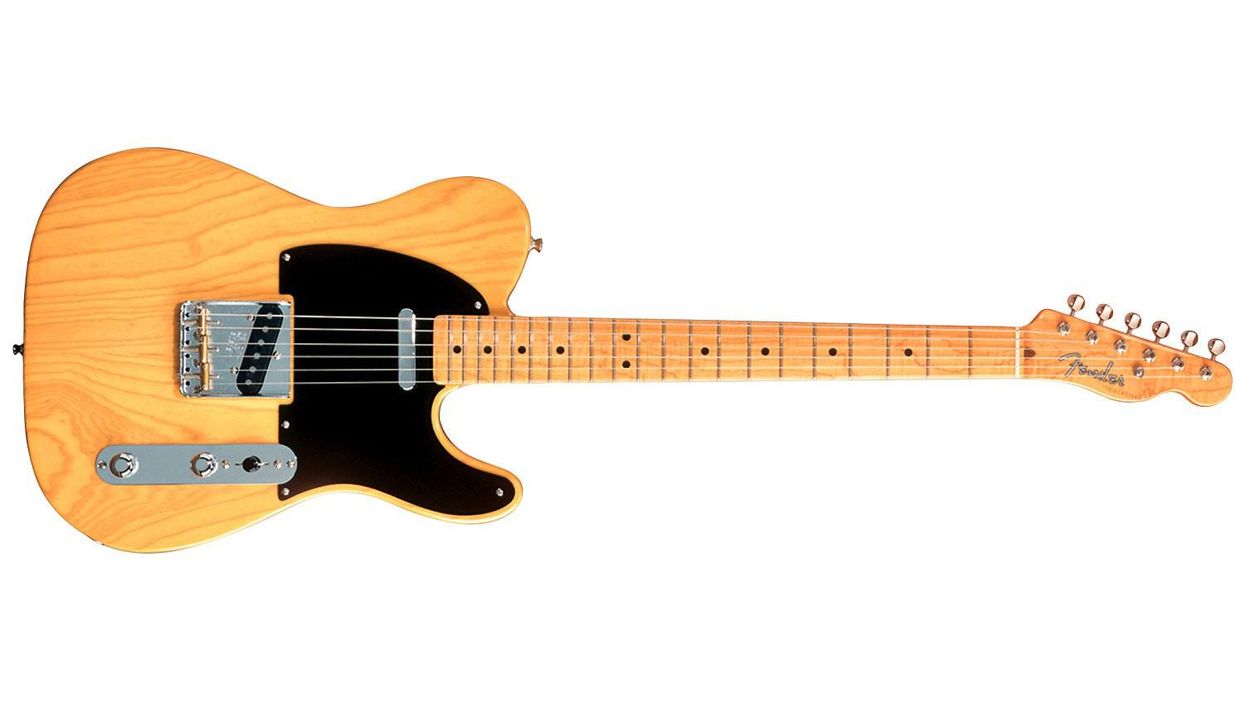I hope you all had a great holidays and that Santa brought you some nice new gear toys … maybe a Telecaster? If so, heat up your soldering iron, because this month, we will take a closer look into the Telecaster circuit and the possibilities to expand its tonal palette.
A General Electrical Update
To start, I would like to ask you a question: how many things can you name that are still built today exactly the same way as 60 years before? The Telecaster is one of them! Without any doubt, Leo Fender was one of the great masterminds in musical history. Almost 60 years ago, he constructed an electrical guitar that remains a landmark today. The Telecaster is a guitar with very complex primary-tone physics, but on the other hand, is electronically very simple. If your Telecaster has a good primary tone, it will benefit from the following mods and you can maximize your tonal possibilities.
Many guitars suffer from poor components that can turn into trouble within a short time; following Murphy´s Law, your troubles will most likely happen in the middle of a solo, live on stage. To make your guitar road-worthy, I highly recommend completely replacing all external components with a "made in the Far East" quality. This can also cure a dull sounding guitar and the virtual "blanket over my amp" syndrome. A fresh and matched set of high quality CTS pots, a good CRL 3-way switch, a new Switchcraft or Neutrik output jack, all connected with good cable and solder plus a top-notch tone cap can do magic to your tone.
Having said that, let''s look at the standard Telecaster wiring that is used in almost all Telecaster guitars today. Through the years, the values of the pots and the tone cap changed several times, so I didn´t name it in the drawings. We will talk about this subject later.
Changing Pot and Cap Values

As a guideline you can say the higher the resistance, the warmer the tone. This is valid for both the pots and the tone cap. For a very bright sounding guitar, I recommend 250k pots to get rid of the penetrating highs; vice versa, you can use 500k or even 1Meg pots on guitars with not so sparkling high-end sizzle to bring out more of the top-end. Of course, this all is personal choice, and is dependent on the pickups you use.
The standard value of the tone cap is 0.047uF, but for most of us this is almost overkill, because when you use your tone control the tone will get clinically dull and liveless. If you don´t want darker tones like this, I recommend changing the tone cap to a much smaller value (e.g. 3300pF, up to 6800pF). This will guarantee that your tone will always be defined and full of life and color, even when you completely close the tone control. You can dial in numerous different tone colors with this simple and inexpensive mod, and it´s a good field to experiment on your own. Personally I use selected 3300pF Orange Drop caps and 250k pots for a classic, vintage Telecaster tone.
Pickup Swapping
I bet the number of good replacement pickups available for Teles has never been bigger than today. An often discussed subject is the Telecaster neck pickup, as it seems to divide players into two different parties: you either love it or hate it. For full disclosure, I´m lean more towards the "I hate it" camp and usually replace this pickup in all of my Telecaster guitars because the standard pickup is too "boxy" sounding for my tastes. If you are willing to reroute the pickup cavity (or better yet, let an experienced luthier do it), here are some suggestions that sound incredibly good on a Telecaster:
- a Stratocaster neck pickup
- a P-90 soapbar pickup (especially on a Thinline Telecaster)
- a Gibson or Gibson-style Mini Humbucker
Coil-splitting
If your guitar is equipped with a 4-conductor cable humbucker, you can perform all kinds of coil splitting to enlarge the number of possible sounds … singlecoil mode, parallel mode, in phase, out of phase, etc. A prime example of a good sounding bridge pickup humbucker for Telecasters is the DiMarzio "The Chopper" pickup. A pickup like this can give you the best of both worlds: a hot and punchy humbucker tone and a classic, twangy singlecoil sound in the split mode. One problem with this is that all the pickup manufacturers use different color codes, so there is no general guideline how to wire all the coil splitting options, as it depends on the pickup you have installed. If you can´t download this information directly from the factory homepage, here is a link for you that could be helpful.
'50s Vintage Wiring
I´m sure you''ve heard about this magical wiring that Gibson used inside late 50s Les Paul guitars and that was almost forgotten for a long time. Electronically there is nothing special about this wiring, it simply connects the tone pot to the output of the volume pot (middle lug), instead of with the input. This changes the way the volume pot reacts, and the overall tone gets stronger and more transparent - more "in the face," you could say. There is much less of the typical treble loss that occurs when rolling back the volume and the tone control reacts smoother and more linear without the typical hot spots.
It´s possible to rewire all guitars this way, not just Les Pauls. With a Telecaster it´s simple, because you only have to change one wire, marked red in the drawing. You can also consider using an additional switch to have both wiring variants available: the classic Fender wiring, as well as the 50s Gibson vintage wiring.
The "Strato-tone" Mod (aka "Nashville" Modification)
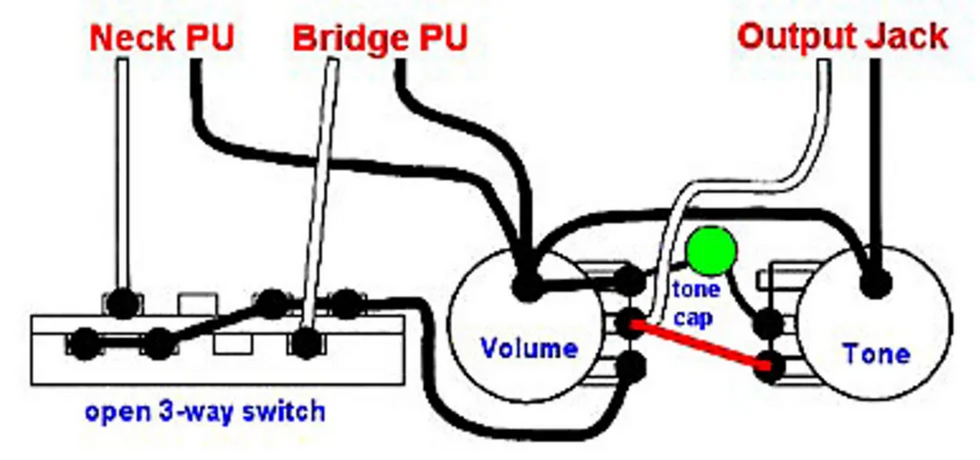
Many of the top Nashville studio players, like Brent Mason or Reggie Young, are playing Telecasters with an additional third pickup in the middle position to get those popular "in-between" Strat sounds (bridge plus middle and middle plus neck together in parallel). If you want to modify your Tele this way, I recommend giving it to an experienced luthier and letting him do the necessary woodwork (routing the additional pickup cavity, rerouting the pickguard, etc.).
Any Stratocaster pickup is a good mate for the standard Telecaster pickups and will expand your tonal palette drastically. You will also have to change the 3-way switch and install a standard Stratocaster 5-way switch and eventually a third pot if needed. Basically, this is a standard Strat configuration and naturally you can perform any Stratocaster mod you like (the 7-tone mod, blending options, etc.), but we will talk about all this Strat stuff in a later column. If one day you decide to switch back to the classic two-pickup Tele configuration, you can simply take out the middle pickup, switch back to a 3-way Telecaster switch and reinstall a standard Telecaster pickguard that will cover the third pickup cavity; suddenly, the former modification is invisible again.
4-way Wiring
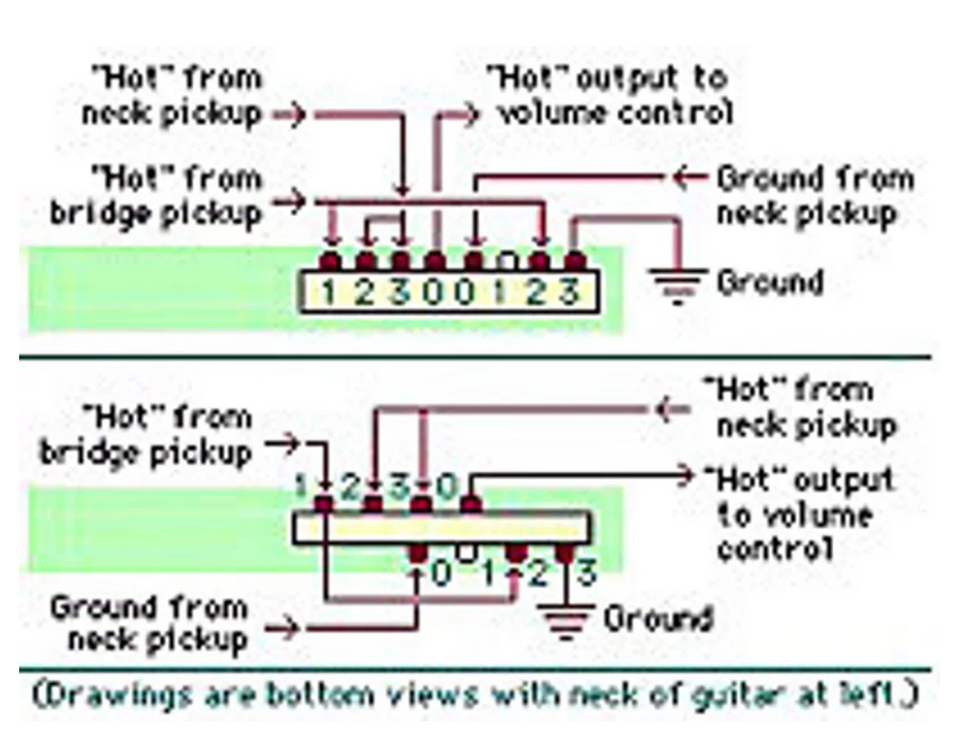
Position 2 of the Telecaster selector switch gives you both pickups wired in parallel; this is a standard wiring, and one of the classic Telecaster tones. But what if you need a fatter sound out of your Tele? The two outside switch positions on the Tele - which select the bridge or neck pickup individually - stay basically the same. But the middle position (both pickups together) wires the pickups in series rather than parallel. This produces a thicker, meatier sound, while still retaining the recognizable characteristics of a Tele. This is not a hum-cancelling combination, but it gives the increased power of a series link. So, in short, all you do is change the #2 position of your 3-way switch, so that the bridge and neck pickups are in series instead of parallel.

If you want to be more flexible, you can install the Fender 4-way Tele switch, as shown in the circuit below. This will give you both sounds when you dial in the two pickups together - wired in parallel (standard wiring) and the wired in series sound.
If, for any reason, you don´t want to install a 4-way switch, you can also use a push/pull pot or a small toggle switch to manually add the neck pickup in series when the Telecaster 3-way switch is in position #1 (bridge pickup alone). Here is what you have to do:

Attention! If you have a standard Telecaster neck pickup with installed metal cover:
For this alteration to work correctly, isolate the metal cover of the neck pickup (if present) from its ground lead. Run a separate ground wire for the cover to the back of the volume control! You can find a good pictured step by step guide for this here - it´s in Spanish, but the pictures are international…
"Direct Through" Switch
If you really want to hear the sound of your guitar together with the pickup, there is only one way: soldering the pickup directly to the output jack. Depending on the guitar, the result can be stunning; with a Tele, your tone will be louder, stronger and more direct, a highly recommended mod for all the country guys, as well as anyone who wants the maximum twang and spank a Tele has to offer. The control pots always add a little load to the circuit and, depending on the pots, the tone will get a bit softer and sometimes dull, losing the shimmering highs and the organic vibe. As you may recognize, the suggested method works well, but is not practicable in any way. However, there are different ways to get rid of the control load in your guitar system:
- You can replace all your pots with so-called "no-load" pots from Fender. This is a very cool, albeit an expensive, way to enhance the sound of your guitar. Electrically this pots are great; when you open them 100%, a circuit will shorten this pot and erase it from the circuit, so it''s as if it never was there. And you can hear it!
- Another way to do this is to use a DPDT switch or a push/pull pot and to perform my "direct-through" mod. You can see how to wire the switch on the circuit below. Activating the switch will bypass all controls and all pickups connected to the pickup selector switch are wired directly to the output jack.
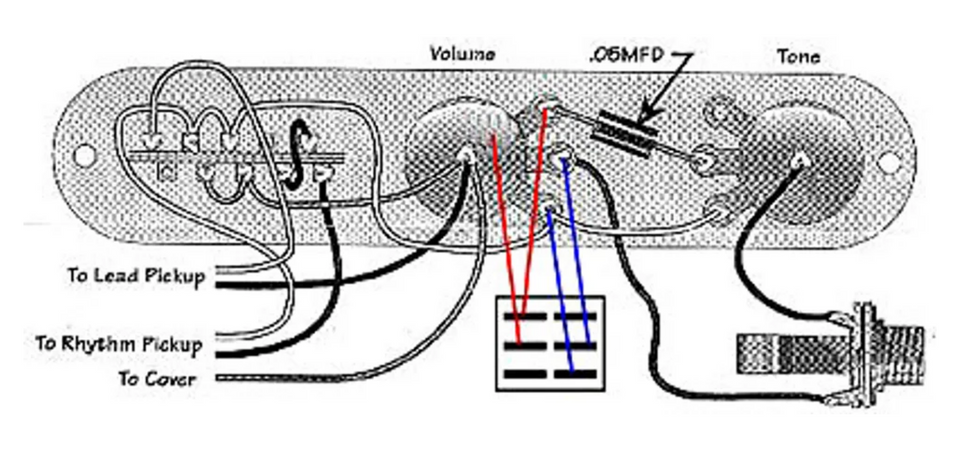
Combating Volume vs. Tone
I´m sure you know the idiosyncracies inherent in passive single coil pickup systems like the Telecaster - when you turn down the volume (even just a bit), the high end or treble loss is not proportionate. In other words, a small cut in volume creates a far greater loss in your guitar´s treble response. The best solution would be to replace the complete system for an active one, but there is a simple method to get rid of this problem.
As you may know, for some time Fender installed a so-called "bleeding cap" on the volume pot to get rid of this problem. Leo was on the right track for sure, but he choose a 1000pF cap that was much too big for this purpose and you can´t use one value for all configurations; it depends a lot on the pickups, the pots, the cables and, of course, the amp you use. The theory behind this is much more complex than it seems, so maybe we will take a closer look into this in a later column. But for now, please take my word and desolder the 1000pF cap if you have one installed.
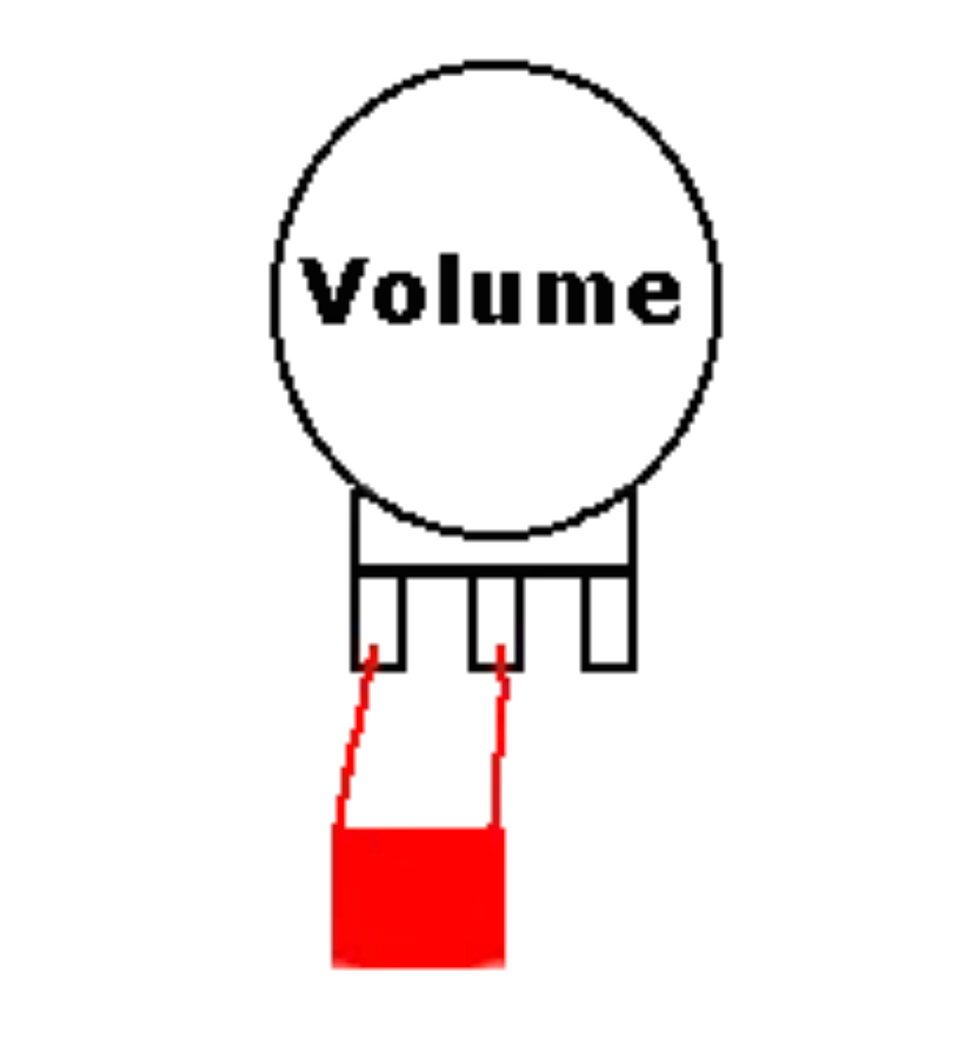
When rolling back the volume, this cap will pronounce the highs much more than necessary and you can get some really cool, funky sounds with that, but for most of us, 1000pF is not a helpful value in any way. For a standard Telecaster with two singlecoil pickups, connected to two 250k pots, install a 470pF cap and experiment from there. The higher the value, the more treble you''ll receive when rolling back the volume. For other pot values, you unfortunately can´t use the "cap only" method because it would kill the mid frequencies. For this, you will need a treble bleeding network with caps and resistors in parallel or in series, depending on the configuration.
Well, I hope you enjoyed this one and good luck pimping your Tele-Babies!
[Updated 7/20/21]
